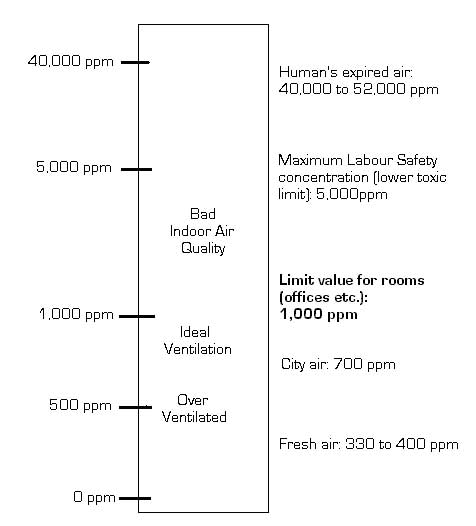Indoor Air Quality and Carbon Dioxide
Learning About Air Quality & Carbon Dioxide
Carbon Dioxide (CO2) Measurement
The concentration of carbon dioxide is used as an indicator when assessing indoor air quality.
The limit value for CO2 is 1000 ppm, if levels are too high it can make the air “stuffy or stale”
Effects of CO2
Rooms with poor air quality may result in tiredness and a lack of concentration or even in some cases illness otherwise known as sick building syndrome (SBS). Symptoms include: headaches, eye, nose and throat irritation, itchy skin, nausea, dizziness, fatigue and difficulty concentrating.
Poor air quality is usually caused by insufficient ventilation. Normally the CO2 concentration in demand controlled ventilating (DCV) is used to control the fresh air supply. Stationary CO2 transmitters are used and should be checked regularly with a hand-held measuring device.

A Capnograph is an instrument which is used to measure the concentration of carbon dioxide (CO2) within an air sample by measuring the absorption of inferred light as it is absorbed particularly well by carbon dioxide.
Capnographs are mainly used in medicine to measure the amount of CO2 in inspired and expired air.
-

Castle Products
CLICK HERE FOR
Information, technical data, images and pricing of all Castle Group Ltd. products -

Product Rental
CLICK HERE FOR
Hire the best equipment at a fraction of the purchase price -

Calibration Lab.
CLICK HERE FOR
Calibration and repair services from Air Samplers to Vibration Meters -

Training
CLICK HERE FOR
World class safety and environmental courses. On your site or our 4* training facility -

Consultancy
CLICK HERE FOR
Employ our expertise for both simple and more demanding issues.












